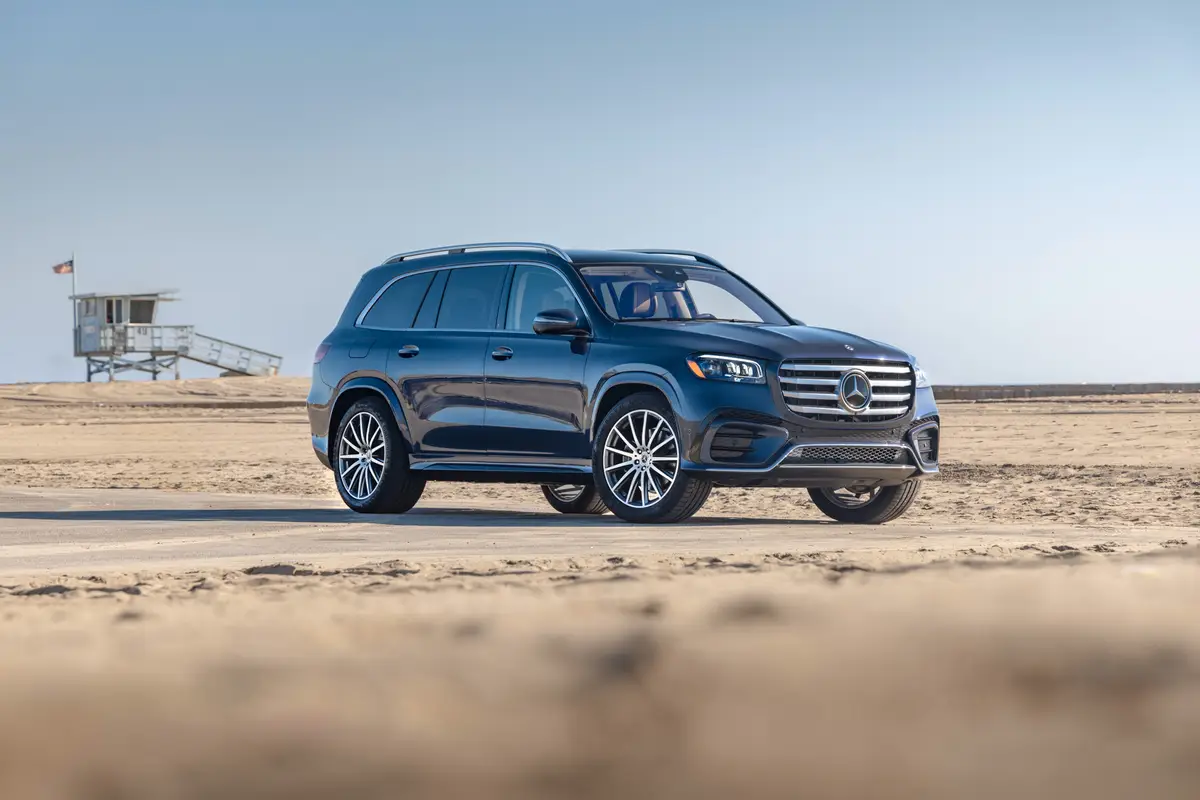chicagotribune.com's view
The 1995 Jaguar XJR sedan needn’t come with an owner’s manual. All it really needs is a tiny slip of paper in the glove box with the two-word warning: “Hang on.”
Jaguar redesigned its sedan lineup for 1995 and opted to put a 4-liter, 322-horsepower, 24-valve, supercharged, in-line 6-cylinder engine under the hood of the XJR.
Firmly press the pedal and off you go. No balkiness, no hesitation waiting for the supercharger to go to work, just a smooth, steady increase in speed to merge, pass or cruise ahead of the flow of traffic.
You dash from 0 to60 m.p.h. in 6.7 seconds. Pointing the way is the “bonnet leaper,” which, to the unwashed, resembles a leaping chrome Jaguar where some cars have what’s called a hood ornament. The distinction between hood ornament and bonnet leaper arises when you spot the $200 added to your bill for the latter.
The 1995 Jaguar XJR sedan we tested was power-packed. It’s the first supercharged Jaguar in the 72-year history of the company. Certainly no complaints. In the past, its hefty poundage often confined a Jaguar sedan to the lumbering lane. With the supercharger, it now is free to pick the pavement of its choice.
So hang on. The speedometer and fuel gauge needles jump to life, but while one needle rises sharply, the other heads in the other direction at almost the same pace. The XJR will pass anything on the road except the filling station. The price of your pleasure is $1,700 in gas-guzzler taxes.
This is a performance sedan, Jaguar style.
The sedan has been restyled for 1995 but the sheet metal leaves no doubt about the Jaguar heritage-bonnet leaper and all. Jaguar is one of the few cars left that can be distinguished several blocks away, an image and status symbol. Everyone at some time in their life wants to slip behind the wheel of a Jaguar and inhale the leather fumes.
Performance has been complemented by the safety systems-dual air bags, anti-lock brakes and traction control are standard, though traction control seems to lose some of its road-holding effectiveness when teamed with 17-inch Pirelli P Zero tires that tend to act skittish when they meet water.
When roads are dry, ride and handling are above average. You feel the weight in the wheel (4,200 pounds, minus the bonnet leaper), but not when you swing up that exit ramp on the tollway and accelerate without body lean and sway, thanks to the speed-sensitive and sport-tuned power steering, limited slip differential, fully independent twin wishbone suspension with anti-roll/anti-dive/anti-squat geometry to sit flat under hard acceleration/cornering/-braking.
Still, the XJR is a rather civilized machine, in part evidenced by the fact that when you pusha button in the center console a pair of cupholders pop forth. They won’t hold a Big Gulp, but you can’t have everything, even for $65,000, plus $200 for a bo nnet leaper.
The standard equipment includes heated seats, headlamp washers, engine block heater, tilt and telescoping steering wheel that motors up and away automatically when exiting the car and returns to the position last used when re-entering and inserting the key, body-colored mirrors/bumpers/bodyside moldings, Connolly leather interior, Bird’s-eye maple trim on the gearshift knob, dual illuminated sunvisors, foglamps front and rear, security system (loud enough to wake the dead if you try opening a locked door without the key), overhead console with storage for sunglasses, power locks, prewiring for cellular phone and garage door/entry gate opener, heated rear window, power windows, outside temperature reading, trip odometer, automatic climate control, premium sound system with compact disc player and electric slide/tilt sunroof.
The true test of a Jaguar, of course, is its ability to run as well five years from now as it does today-a far cryf om the ’80s, when the question was whether a Jaguar could be kept running five minutes from now.
>> 1995 Jaguar XJR sedan Wheelbase: 113 inches Length: 197.8 inches Engine: 4-liter, 322-h.p., 24-valve, supercharged in-line 6 cylinder Transmission: 4-speed automatic EPA mileage: 15 m.p.g. city/21 m.p.g. highway Base price:$65,000 Price as tested: $65,300. Add $200 for bonnet leaper and $100 for full-size spare tire. Freight runs $580. And don’t forget the $1,700 gas-guzzler tax. Pluses: Real nice bonnet leaper. And, what is this world coming to, a set of (leap for joy) pop-out cupholders on a Jaguar. Dual air bags, ABS and traction control thrown in as standard for good measure. Instant recognition as status symbol. Minuses: The 17-inch Pirelli tires didn’t seem to be enamored with wet road surfaces, perhaps one reason traction control is standard. Cupholders won’t handle a Big Gulp. Fuel tank requires a big gulp. >>
Latest news



